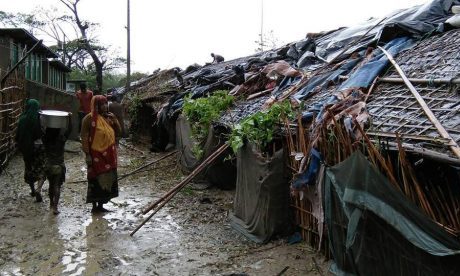If there’s anything positive about the sprawling Rohingya refugee camps near Cox’s Bazaar, Bangladesh, it’s that the residents – despite their appalling recent experiences and obvious deprivation – are at least safe here from Myanmar’s military.
I’ve been visiting Rohingya refugee camps close to the Bangladesh/Myanmar border, and the scale of the forced migration is truly horrifying.
Land unoccupied in late August is now a cramped shanty city of bamboo, tarpaulin and mud that seems to go on forever.
Interviews in the camps paint a desperately sad picture. The details of these interviews are invariably confronting and often distressing, and explain why so many Rohingya fled Myanmar so quickly.
A farmer becomes understandably emotional when he tells me:
“I lost my two sons, and two daughters. At midnight the military come in my house and burnt the house, but first they raped my two daughters and they shot my two daughters in front of me.
“I have no words to express how it was for me to suffer to look at my daughters being raped and killed in front of me. My two sons were also killed by the government. I was not able to get the dead bodies of my daughters, it is a great sorrow for me.”
Background to the refugee crisis
The military’s ongoing “clearance operation” began in late August with the supposed aim of ridding Myanmar of a recently emerged militant group.
But this campaign’s real intent is now widely regarded as being to force the ethnic Rohingya, a Muslim minority, from their homes, away from their land, and out of Myanmar.
Myanmar’s military, the Tatmadaw, has used tactics that are brutal, indiscriminate, and yet sadly familiar to the Rohingya and other groups in Myanmar such as the ethnic Kachin and Karen.
Witnesses described to me how, when the Tatmadaw arrived at their village, the soldiers fired weapons and killed people inside wooden homes, arrested young men, raped women, told residents to leave, and then burned homes to prevent the residents’ return. Continue reading
Sources
- The Conversation article by Ronan Lee, PhD Candidate, Alfred Deakin Institute for Citizenship and Globalisation, Deakin University
- Image: Hindustan Times
